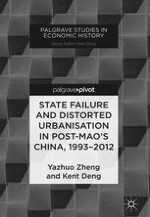
2018 | OriginalPaper | Buchkapitel
1. Introduction
verfasst von : Yazhuo Zheng, Kent Deng
Erschienen in: State Failure and Distorted Urbanisation in Post-Mao's China, 1993–2012
Aktivieren Sie unsere intelligente Suche, um passende Fachinhalte oder Patente zu finden.
Wählen Sie Textabschnitte aus um mit Künstlicher Intelligenz passenden Patente zu finden. powered by
Markieren Sie Textabschnitte, um KI-gestützt weitere passende Inhalte zu finden. powered by